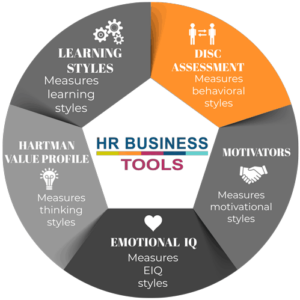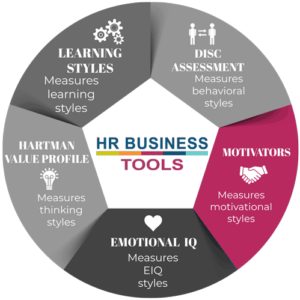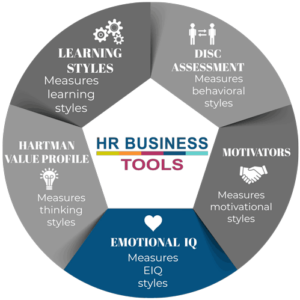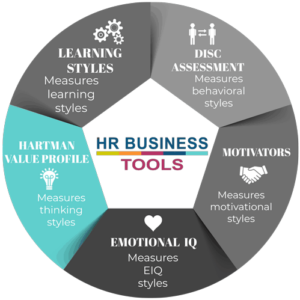Personality Assessments
Assess for Culture ADD not Culture FIT

Maximize hiring and retention efforts, increase employee productivity, improve team building and boost performance with our personality and behavior assessments.
It’s important for job candidates to demonstrate the attitudes and behaviors that would enable them to succeed in each company’s unique environment, but how can interviews alone be enough for you to make a decision? The answer is they aren’t.
Assessments work by measuring a variety of criteria: intellectual ability, achievement motivation, skill proficiency, work styles, personality characteristics, and personal values. Assessments are a first step toward establishing a solvent bedrock of talent for any company.
The benefits of using assessments can be profound:
1. Accuracy in hiring and selection.
2. Reduce employee turnover.
3. More accurate promotions.
4. Reduced training costs.
5. Increased employee sense of well-being.
Explore The HR Tools
DISC Assessment
Our DISC reports are as much prescriptive as they are descriptive. In other words, they pinpoint the insights users need to improve their interpersonal outcomes and workplace dynamics. While our reports do go into considerable detail describing each user’s natural and adaptive DISC behavioral style, we believe this is only the first step.
What good is understanding your behavioral style without the actionable lessons to leverage them?
Download our information sheet to learn more.
Motivators
The Motivators assessment identifies the seven personal “drivers” which exist in everyone to varying levels. By taking detailed measurements across the seven Universal Dimensions of Motivation, this popular assessment is able to offer the insights needed to align an individual’s inherent motivations and values with their workplace responsibilities.
Where-as DISC enables you to understand (and even predict) HOW someone will behave, Motivators reveals WHY.
After all, is it ideal to develop a commissioned sales professional who isn’t motivated by economics? Or a team supervisor who doesn’t sufficiently value regulation?
Download our information sheet to learn more.
What good is understanding your behavioral style without the actionable lessons to leverage them?
Download our information sheet to learn more.
Emotional IQ
A person with a high emotional intelligence is more likely to be aware of – and manage his/her behavior in – stressful workplace situations. That balance lends itself to improved decision-making and leadership.
Studies show that someone with a high EIQ is also likely to be better at “reading” the emotions in others, thereby engaging them for more profitable and mutually beneficial outcomes, whether that be in sales, entrepreneurship, human resources or even collaborative projects.
The emotional intelligence trend in business is REAL… and it’s only getting bigger. Don’t find yourself unequipped.
Hartman Value Profile
- People (Intuitive Thinking) is measured by assessing Empathy and Self Esteem
- Task (Practical Thinking) is measured by assessing Practical Judgment and Role Awareness
- Systems (Conceptual Thinking) is measured using Systems Judgment and Self Direction





